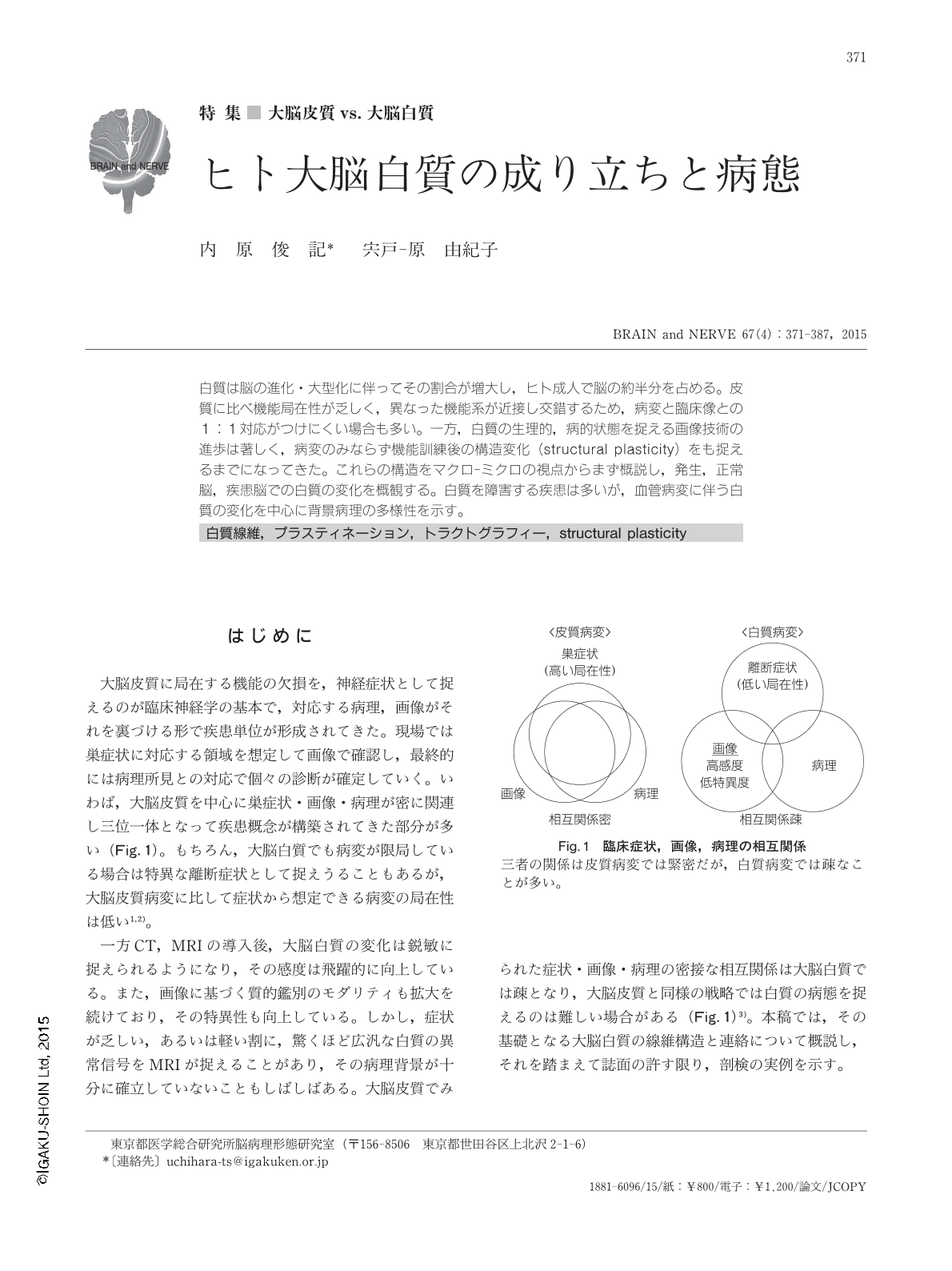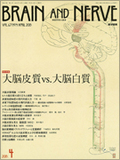Japanese
English
- 有料閲覧
- Abstract 文献概要
- 1ページ目 Look Inside
- 参考文献 Reference
白質は脳の進化・大型化に伴ってその割合が増大し,ヒト成人で脳の約半分を占める。皮質に比べ機能局在性が乏しく,異なった機能系が近接し交錯するため,病変と臨床像との1:1対応がつけにくい場合も多い。一方,白質の生理的,病的状態を捉える画像技術の進歩は著しく,病変のみならず機能訓練後の構造変化(structural plasticity)をも捉えるまでになってきた。これらの構造をマクロ-ミクロの視点からまず概説し,発生,正常脳,疾患脳での白質の変化を概観する。白質を障害する疾患は多いが,血管病変に伴う白質の変化を中心に背景病理の多様性を示す。
Abstract
The proportion of white matter in the brain has increased during evolution, and white matter comprises approximately half of the human brain. Its macroscopic as well as microscopic structures change during development, aging, and disease progression as well as following physical or mental training. Knowledge about the structural plasticity of the white matter may alter our cortex-oriented view of brain functions and expand our strategies for diagnosis and treatment, including rehabilitation, since the gray and white matter are complementary. Although the presence of white matter lesions is easy to detect with magnetic resonance imaging of the brain, their qualitative differentiation requires vast knowledge about the underlying processes. Examples from multiple ischemic lesions caused by different disease processes affecting the cerebral arteries are presented for comparison. It is worth considering "what matters more in the white matter" by taking into account the basic structures of the brain as well as their plasticity. Such "thinking inside of the brain" may further expand our understanding of the brain to improve our clinical interpretations and treatments.

Copyright © 2015, Igaku-Shoin Ltd. All rights reserved.


